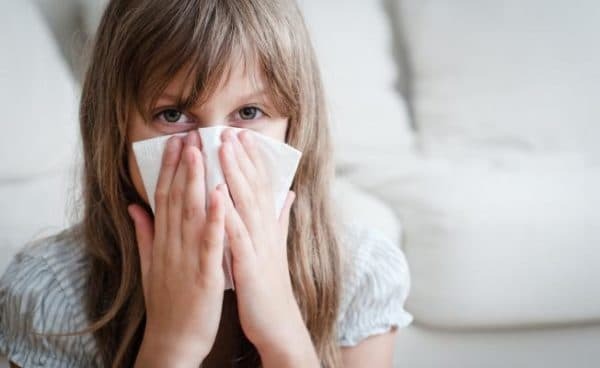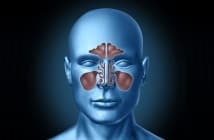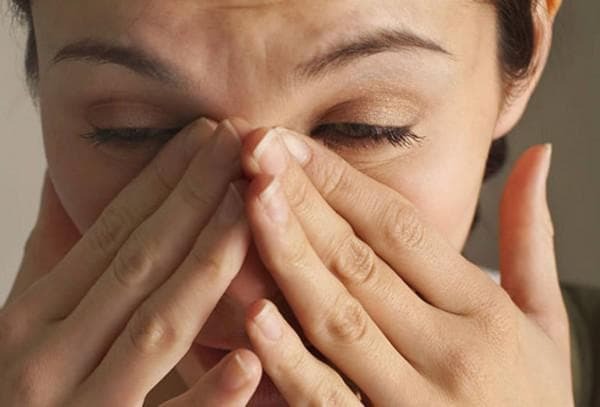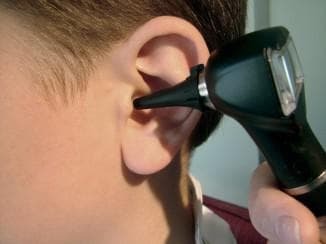
A sinusitis is a group of inflammatory diseases that develop in the paranasal sinuses. These pathologies are often diagnosed, can affect people of different ages and social status, have a certain( pronounced) symptomatology.
Content
- 1 Types
- 2 disease Key signs and symptoms
- 2.1 Polypoid sinusitis
- 2.2 fronts
- 2.3 Sinusitis
- 2.4 ethmoiditis
- 2.5 sphenoiditis
- 2.6 pansinusitis
- 3 Effective treatments
- 3.1 Medication
- 3.2 Folk remedies
- 4 Possiblecomplications
- 5 Video
Types of the disease

Depending on the type of sinusitis, the symptoms of the disease can differ significantly
There are two main types of the diseasethe nature of the disease: acute and chronic. The second species is always a consequence of neglected acute and develops gradually. In turn, sinusitis can occur in a purulent form( it is a bacterial type of disease) and catarrhal( the etiology of inflammation is viral).
On the localization of the inflammatory process in specific paranasal sinuses, the following types of sinusitis are distinguished:
- frontitis;
- sinusitis;
- pansinusit;
- etmoiditis;
- sphenoiditis.
There is also polyposive sinusitis - it is associated with the formation of "growths" / neoplasms of a benign nature in the sinuses of the nose.
 Which antibiotics for sinusitis in adults are most often used, is indicated in the article.
Which antibiotics for sinusitis in adults are most often used, is indicated in the article.
The article contains reviews about the drug sumamed with sinusitis.
It is worth mentioning the allergic type of the disease under consideration - it arises periodically, is caused by an external stimulus.
For each of the listed types / types / forms of inflammation of the paranasal sinuses, there are specific symptoms - they allow for accurate diagnosis.
The main signs and symptoms of
 There are common characteristics of sinusitis:
There are common characteristics of sinusitis:
- nasal congestion + shortness of breath;
- a feeling of heaviness in the forehead;
- headaches are of a non-intensive, but persistent nature.
But only on the listed signs to classify and differentiate the inflammatory disease even an experienced doctor is beyond the power - it is necessary to take into account more specific symptoms.
Polyposis sinusitis
It is characterized by loss of smell, sensations of the presence of a foreign body in the nose, pain in the nasal passages, mucous discharge from the nose. Note: the selection first differs in transparency and lack of high viscosity , but then, in the process of growth of benign neoplasms, mucus not only accumulates in the paranasal sinuses, but also begins to acquire a more viscous character.
Front
 In this case, the inflammatory process affects the frontal sinuses of the nose and, naturally, the signs of such sinusitis will be very pronounced:
In this case, the inflammatory process affects the frontal sinuses of the nose and, naturally, the signs of such sinusitis will be very pronounced:
- edema of the forehead and upper eyelids;
- pain in the forehead region, which increases with the inclination of the head;
- purulent discharge from the nose;
- hyperthermia( high body temperature).
Sinusitis
Sinusitis is purulent, the location of which occurs in the maxillary sinuses - they are located under the eyes and have a common septum with nasal passages. The first signs of genyantritis:
- nasal congestion - the patient can not breathe at all;

- pain in the area of cheekbones, temples, can spread to the forehead;
- increased lacrimation;
- total loss of smell;
- the patient constantly senses a fetid odor;
- from the nose go purulent discharge.
Etmeditis
The inflammatory process develops on the mucosa of the latticed bone, is a consequence of chronic or acute( but protracted) sinusitis of any other forms. Symptoms:
- hyperthermia - maximum low-grade indications;
- pain in the bridge of the nose - is amplified by pressing it;

- edema of the eyelids;
- vision loss - the patient complains of the "film", "blurring" of the visible image;
- discharge from the nose is serous.
Sphenoiditis
The sphenoid sinuses are located in a very successful place - they are reliably protected from all other paranasal sinuses by dense septa, therefore inflammatory processes in them occur extremely rarely.
If inflammation in the sphenoid sinuses has occurred, then this is considered a very dangerous condition: the proximity of finding the pituitary gland, eye nerves and carotid arteries can provoke meningitis and other complex diseases.

Nasal discharge of purulent character is one of the characteristic signs of sphenoiditis
. It is noteworthy that the main signs of sphenoiditis are as follows:
- occipital pain is aching, permanent, not removed by painkillers;
- discharge from the nose of a purulent nature. Of course, there is a general deterioration in well-being, and stuffiness of the nose, and loss of smell, but they are not determining the clinical picture - it is impossible to diagnose exclusively this type of sinusitis.
 How does the tool of a spray from a genyantritis look and how much it costs, it is possible to learn or find out having read through clause or article.
How does the tool of a spray from a genyantritis look and how much it costs, it is possible to learn or find out having read through clause or article. How to get rid of sinusitis, you can find out by reading the article.
How to cure bilateral catarrhal sinusitis is indicated here: http: //prolor.ru/n/ bolezni-n /gajmorit/ kataralnyj-gajmorit.html
Pain in the nape and purulent discharge are not pronounced, which allows a long "wearing" of the inflammatory process in the body without treatment.
Pansinusitis
The inflammatory process develops simultaneously in all of the paranasal sinuses - a condition often diagnosed in patients with severely weakened immunity. A fairly severe form of the disease under consideration, for which all of the above symptoms are inherent, but in a more pronounced form.
Effective methods of treatment
Treatment of any form of sinusitis must be carried out, consulting with a doctor!
Medication
 First of all, the patient needs to take off symptoms and ease breathing - any vasoconstrictive drugs( for example, naphthyzine in drops) can be used for this. Important: these medicines can be used for no more than 3 days in a row - otherwise there is an addiction.
First of all, the patient needs to take off symptoms and ease breathing - any vasoconstrictive drugs( for example, naphthyzine in drops) can be used for this. Important: these medicines can be used for no more than 3 days in a row - otherwise there is an addiction. But solely with the removal of symptoms, the inflammatory process can not be stopped - it will be necessary to select antibacterial drugs( antibiotics) - they are the ones that can destroy pathogenic bacteria. But keep in mind that in the case of the development of catarrhal sinusitis, which is caused by viruses, even the most powerful antibiotics are powerless. If necessary, the following types of antibiotics are prescribed: amoxicillin, doxycycline, ceflacor - they are considered to be the most effective.
If allergic sinusitis develops, then exclusively antihistamines will help - they can cause drowsiness, have contraindications to admission and therefore a doctor's consultation is necessary.
Folk remedies

Nasal rinsing with salt water greatly alleviates the condition of the patient with sinusitis
If acute sinusitis develops or if the chronic form of the disease worsens, then in addition to antibiotic therapy, the popular methods of treating sinusitis will also have an effect.
- instillation into the nose of aloe juice;
- washing of the nasal passages and sinuses with decoction of sage and salt water;
- instill in the nose of radish juice with honey or a weak tincture of propolis.
Please note: with previously diagnosed chronic sinusitis, during its exacerbation, folk remedies are likely to be ineffective - antibiotic treatment can not be avoided.
Official medicine recognizes the benefits of these folk methods of treating sinusitis, it emphasizes that they are good as a component of complex therapy.
Possible complications of
 If sinusitis is not treated, rely on the infamous "maybe", then in the near future one can expect:
If sinusitis is not treated, rely on the infamous "maybe", then in the near future one can expect: - the transition of the acute form of the considered inflammatory disease into a chronic one;
- meningitis;
- otitis media;
- inflammation of the periosteum.
Video
More about the symptoms of sinusitis in this video:
Sinusitis is a safe disease only at the beginning of its development and if the necessary therapeutic measures are taken, no complications are expected, and the disease forecast will always be positive.
